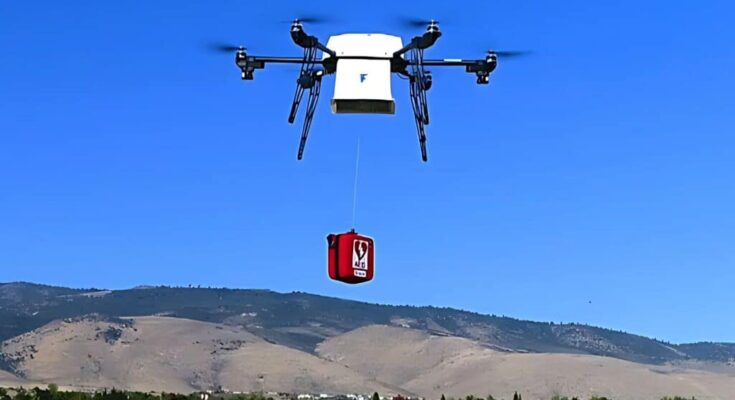
South Korean scientists have created a new type of drone that can carry goods over uneven surfaces such as stairs. The drone has flexible rotors that adjust themselves to keep the drone steady while flying. It is designed to work like a “flying shopping cart,” making it easier to transfer items from place to place.
A team from Seoul National University of Science and Technology built this prototype. The drone has a platform on top where cargo can be placed. It is controlled by a person who gently guides it while it hovers in the air.
During a demonstration, the team demonstrated how the drone can move objects up and down stairs. It was guided by a handlebar, similar to a regular shopping cart, while boxes were loaded on top. The drone stayed balanced as it moved, thanks to a special algorithm that keeps it steady.
The drone is designed to move objects over uneven surfaces or stairs, where it would otherwise be impossible for a wheeled cart. It follows human guidance through what the developers describe as a “physical human-robot interaction” method.
This allows the drone to sense and respond to a person’s intentions, making its flight smoother, according to Professor Lee Seung-jae, an expert in mechanical system design engineering.
However, the main goal of Lee’s team is not just creating a flying shopping cart. Their focus is on building drones that can maintain steady, horizontal flight without tilting, which could be useful in many other areas.
“The Palletrone can be more than a flying shopping cart,” said Professor Lee Seung-jae, referring to the name the team gave their prototype.
Technology being used in uncrewed “flying taxis”
Lee’s team has tested the Palletrone with a platform capable of carrying objects up to 3 kilograms (6.6 pounds). While they admit that such a light load, which humans can easily handle, limits its commercial use for cargo transport, the technology behind it has further potential.
According to Lee, the drone’s ability to alter directions mid-flight without tilting and to stay level makes it ideal for transporting fragile or sensitive items.
Looking ahead, Lee’s team envisions this technology being used in uncrewed “flying taxis” which would transport people. They also see potential for drones to be refueled in the air by swapping batteries, eliminating the need to return to base for recharging.
Multi-rotor drones, while slower with a shorter range compared to fixed-wing drones, offer better control and maneuverability. They can hover in place, giving them an advantage in tasks that require precision and stability.



